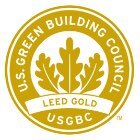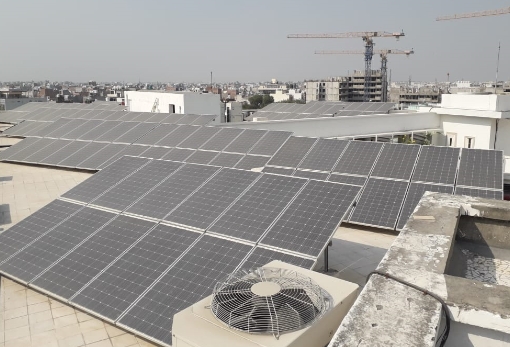A GREEN BUILDING
Planned as a sustainable green facility, the architectural plans for our building effectively blend traditional environmental wisdom with contemporary practice.
Pioneering holistic practice in accordance with or vision and values, the NiBS building was the first school in the Delhi-NCR region to be awarded a LEED Gold rating by the ‘The Leadership in Energy and Environmental Design’ (LEED) building certification system. We have also received a Platinum rating by the Indian Green Building Council (IGBC), the highest in Global Leadership Standards in environmental protection and conservation benchmarks.


Indoor Air Quality
In order to ensure the highest levels of indoor air quality, an efficient ventilation system has been put in place and care has been taken to use non-toxic paints, sealants and adhesives consisting of low Volatile Organic Compounds.
Water Conservation
A variety of measures have also been taken to conserve water, such as the use of treated sewage water for irrigation and HVAC purposes, the use of low wastage fixtures in toilets and a well-planned rain water harvesting and drainage system.
Light Efficiency
Taking into account detailed studies of the sun’s movement, each of our spaces are optimally oriented, designed and built to maximise natural light and achieve thermal comfort.
Scientifically designed shading devices ensure that all rooms are naturally lit but receive no glare.
Energy Efficiency
Energy efficiency has also been achieved in a variety of ways. A sensitively designed building envelope, planned interior and exterior lighting designs, an HVAC system that utilises evaporative cooling, an efficient chilled water system, better fan-power and TES have all contributed to substantial savings.
In an effort to use renewable sources of energy, solar panels producing 100 kilowatts of electricity have been installed on the school terrace. During school hours, the solar energy generated is used to reduce our consumption of electricity, while during non-working hours it is shared by transferring it to the government grid.
Thermal Efficiency
Thermal comfort and efficiency in our classrooms and indoor spaces have been achieved by a mix of passive energy efficiency measures (EEMs) that reduce heat gain in the occupied spaces, with active energy efficient building systems such as our hybrid, 100 % fresh air based HVAC system that uses 2-stage evaporative cooling and refrigerant based cooling.
Insulated walls and shading devices carefully integrated with façade windows to reduce excessive glare and heat, while allowing for optimal daylight, and intentional cross-ventilation to augment thermal comfort during benign months, are some examples of the EEMs used.
Waste Management
As a school we make every effort to sort and recycle waste.











